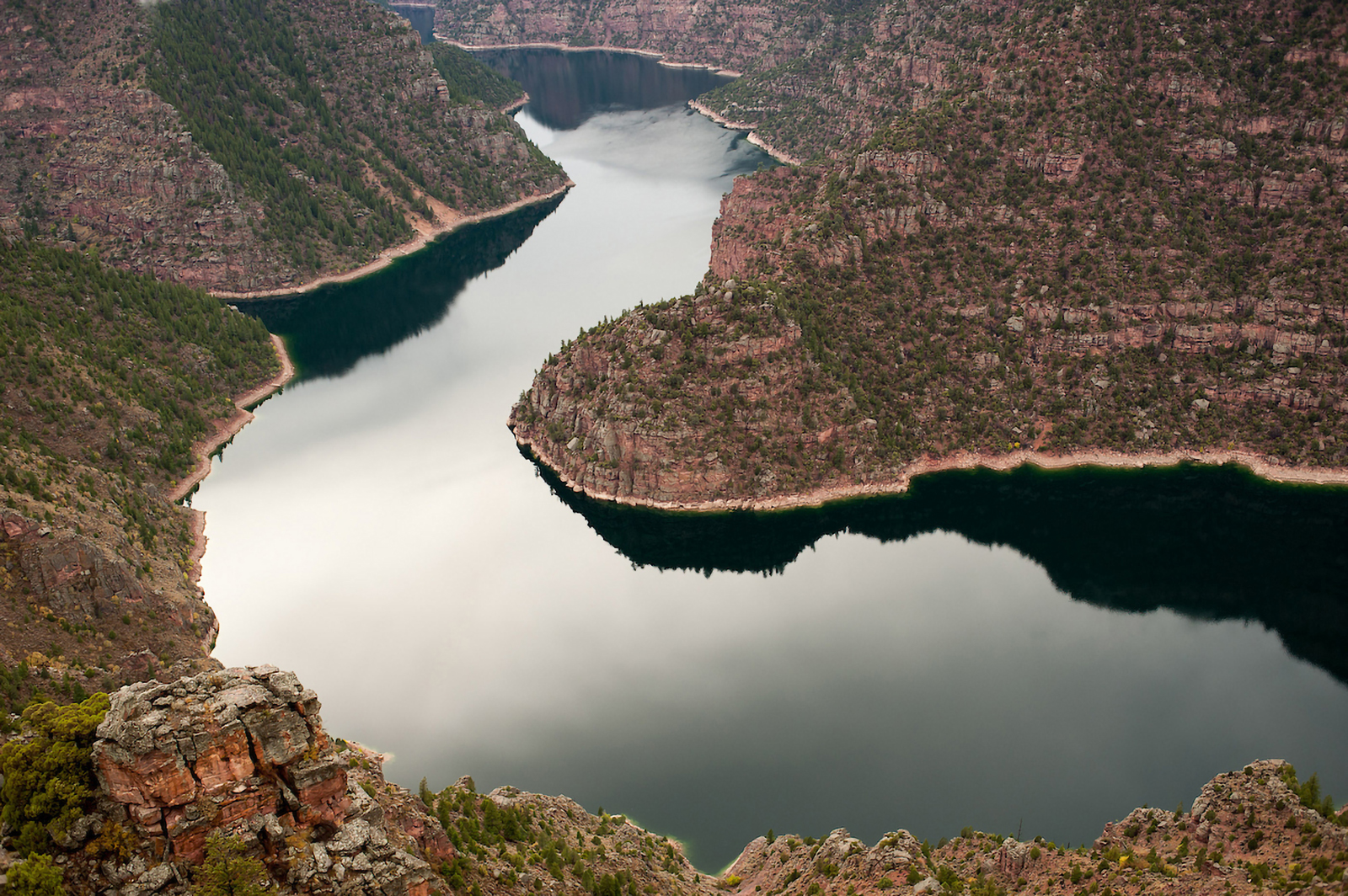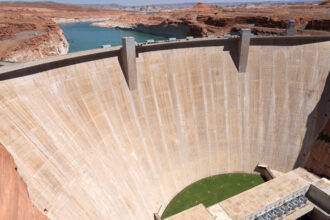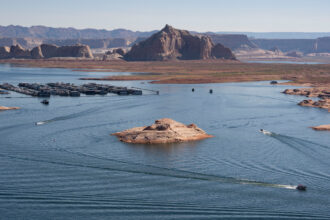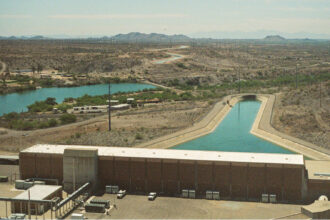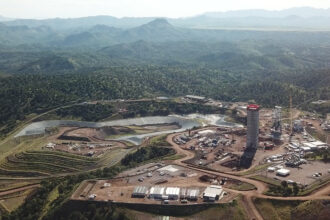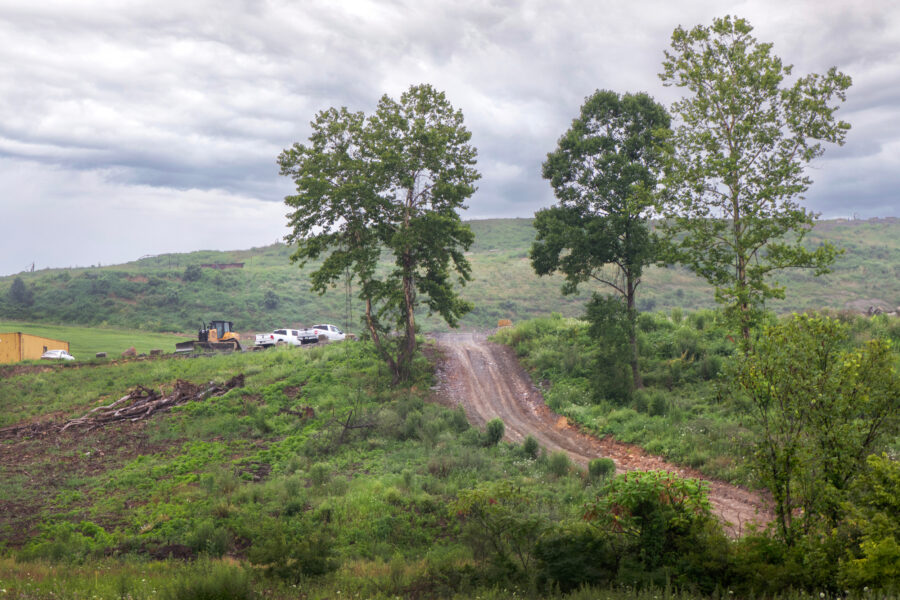With the Nov. 11 deadline to finish the Colorado River negotiations fast approaching, Wyomingites got their first look at a draft of the state’s Green River pilot water conservation program during a meeting held Wednesday.
Brandon Gebhart, the state engineer responsible for managing and regulating the water within Wyoming, and the state’s representative in the negotiations, provided a sparse update on the talks during a Colorado River Advisory Committee meeting, noting that discussions between the basin states “are continuing.”
While a supply-driven solution in which the seven Colorado River Basin states would split the actual flow of the river rather than relying on the static allocations set by the 1922 Colorado River Compact is “still on the table,” according to Gebhart, the states are also discussing other frameworks for sharing the river.
The federal government has informed the basin states that they must reach an agreement by Nov. 11 in order for it to be incorporated into the 2026 Bureau of Reclamation review process under the National Environmental Policy Act. Despite the federal shutdown, the Interior Department and Bureau of Reclamation have prioritized the Colorado River and have continued to participate in the negotiations, according to Gebhart.
“Time is running short,” he said.
Fish, wildlife, cities and towns, agriculture and heavy industry in southwest Wyoming all rely on water from the Green River, the Colorado River’s largest tributary. But as climate change intensifies the West’s worst drought in the last 1,200 years, and river users continue to demand more water than the system can provide, the Colorado River is running dangerously low, threatening the water and electricity supply for 40 million people across seven U.S. states, 30 tribes and Mexico.
In an attempt to slow the river’s decline and to convince the Lower Basin states that the Upper Basin can voluntarily conserve water as opposed to shouldering mandatory cuts, Wyoming has been developing a pilot water conservation program in the Green River Basin. Wednesday’s meeting offered members of the public and Wyoming’s Colorado River Advisory Committee an opportunity to give feedback on the draft legislation.
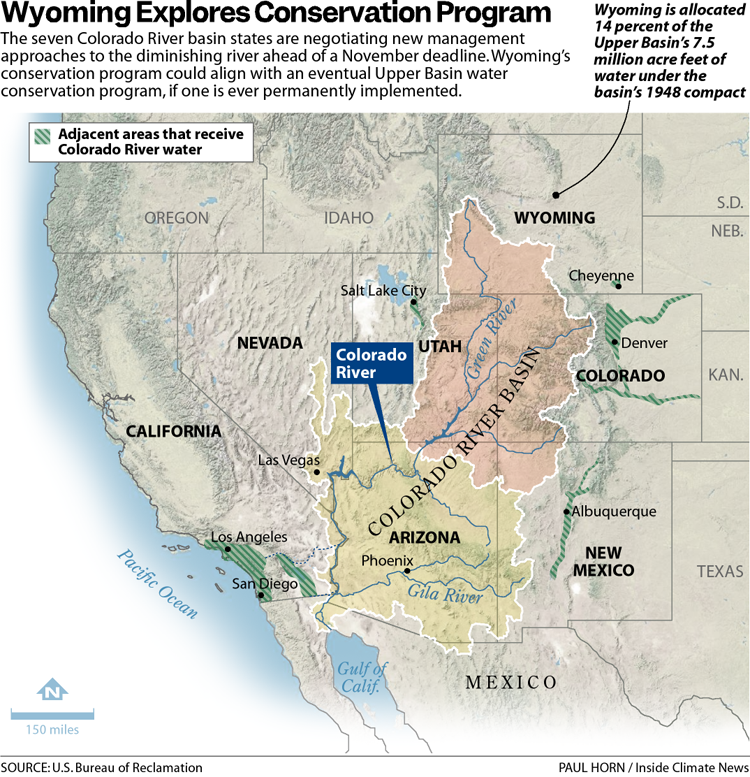
“It’s a good starting point,” said Jim Magagna, executive vice president of the Wyoming Stock Growers Association, who attended the meeting. “Do I think it’s just going to smoothly sail through without a lot of further discussion and potential changes? No.”
Wyoming’s pilot conservation program would allow water users with a proven consumptive water right in Wyoming’s portion of the Colorado River basin to apply to the state engineer’s office to implement a conservation project. Applications would cost up to $50.
To make participation attractive and help keep ranchers who choose to fallow fields in business, water users would likely need to be compensated for conserving water, as is customary in the Upper Basin’s System Conservation Pilot Program. But no part of Wyoming’s draft bill laid out how that would happen. Gebhart said that “significant federal funding” would likely be needed to help pay for such compensation.
The program would last five years before coming up for a review, and it has been designed to fit into a larger water conservation program in the Upper Basin, which also includes Colorado, Utah and New Mexico, should it materialize.
Committee Updates
Sign up for updates from Wyoming’s Colorado River Advisory Committee here.
Fallowing irrigated lands, lining canals, implementing new municipal ordinances and other measures could qualify as water conservation strategies. Ranchers, who hold some of the oldest water rights, and industrial users together account the preponderance of water use in Wyoming’s portion of the Green River basin.
Some ranchers expressed reservations about parts of the draft that required public notice of an application to be displayed on the state engineer’s office website for two weeks, as they felt this was not the proper forum or provided sufficient notice.
“I think [notifying ranchers] through the mail would be the most secure thing,” Magagna said, but an option to sign up for an email notification system would work well, too.
The state engineer’s office does not intend to “shepherd” conserved water as it moves through a watershed to prevent users with junior rights from taking it, except in limited circumstances, like for streams where shepherding already occurs. That was a point of contention throughout Wednesday’s meeting.
“If it’s not shepherded, there’s no guarantee that somebody isn’t going to take that water,” said Ron Micheli, who represents the lower Green River on the committee. “To me, it makes the program inconsequential.”
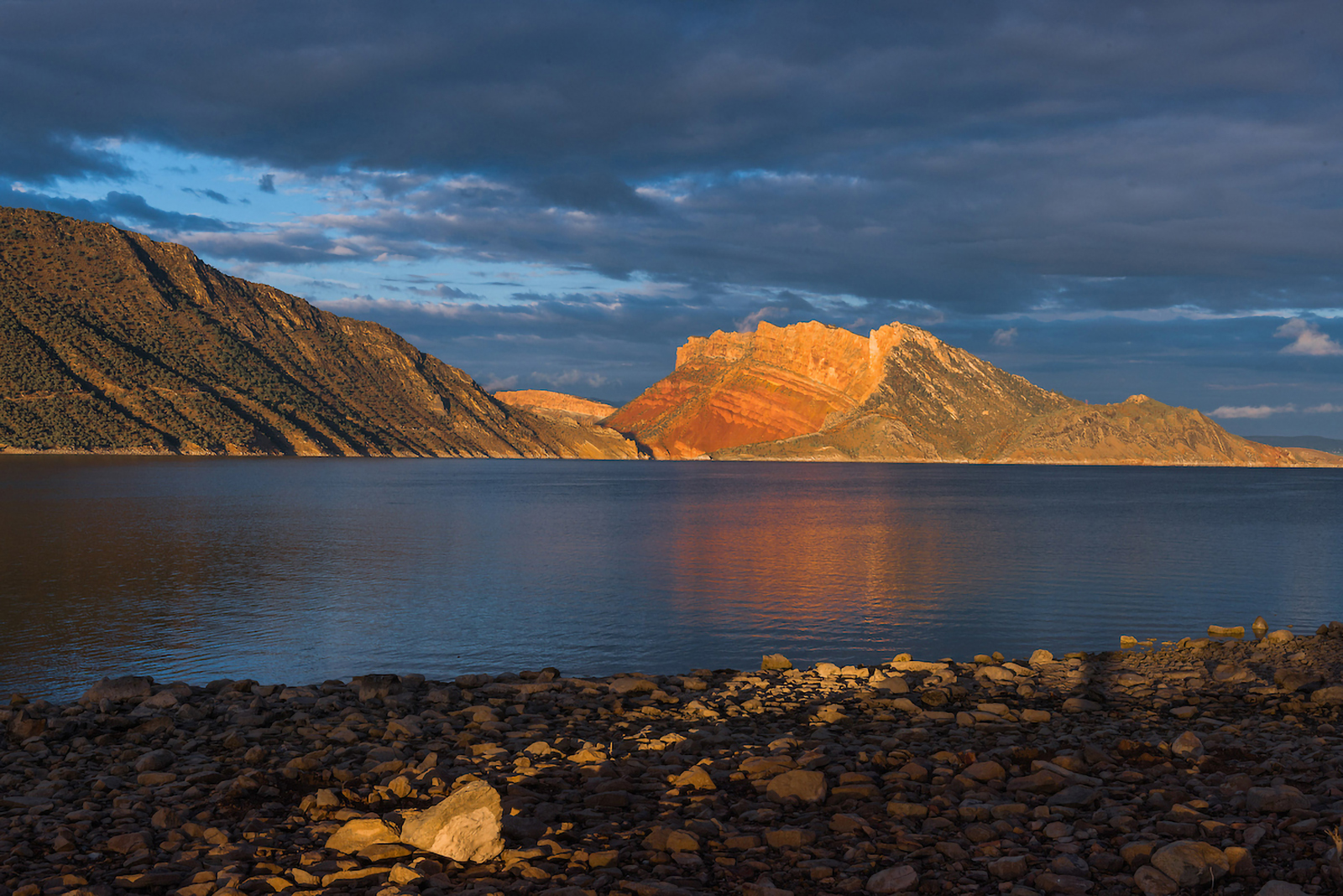
As some voiced opposition to shepherding, others wondered how Wyoming would get other states to accept its conservation efforts if the conserved water was not tracked on its way to Lake Powell, where Upper Basin water is stored for delivery to the Lower Basin states of California, Arizona and Nevada.
“We may have to seek shepherding at some point,” Gebhart said. “I don’t believe that we’ve proven that we can’t track and quantify [conserved water] without shepherding.”
While the meeting did not cover potential benefits to fish and wildlife from the pilot conservation program, conservationists in Wyoming think it could benefit local ecosystems—on top of creating value for irrigators, industries and municipalities—depending on what the final draft legislation looks like.
“There’s a huge range [of options], and all water users will be welcome at the table,” said Jennifer Lamb, a member of Wyoming’s Colorado River Advisory Committee.
Cory Toye, the Wyoming water policy director at Trout Unlimited, attended the meeting and agreed, adding that the state could explore new strategies to conserve water—which could even mimic shepherding. For instance, if a group of water users that draw water near one another on the river agreed to conserve a certain amount of water between them, the water would move past their portion of the system as if the state were shepherding it, Toye said.
“Any program that is stood up is going to help everybody,” he said. “I think it’s for the greater good.”
But some fear that the amount of water Wyoming—the Colorado River basin’s least-populous state—could save would not be enough to make a difference in negotiations with the Lower Basin.
“In Wyoming in particular, conservation is small, it’s messy and it’s complex,” Gebhart said. “We’re not just going to flip a switch and save a huge amount of water.”
After the state engineer’s office reviews public feedback, the draft pilot program will be presented to a group of legislators on Wyoming’s Select Water Committee at a meeting in Casper during the first week of November.
If the bill creating the state’s pilot conservation program is passed during next year’s legislative session, the program would begin in March 2026.
About This Story
Perhaps you noticed: This story, like all the news we publish, is free to read. That’s because Inside Climate News is a 501c3 nonprofit organization. We do not charge a subscription fee, lock our news behind a paywall, or clutter our website with ads. We make our news on climate and the environment freely available to you and anyone who wants it.
That’s not all. We also share our news for free with scores of other media organizations around the country. Many of them can’t afford to do environmental journalism of their own. We’ve built bureaus from coast to coast to report local stories, collaborate with local newsrooms and co-publish articles so that this vital work is shared as widely as possible.
Two of us launched ICN in 2007. Six years later we earned a Pulitzer Prize for National Reporting, and now we run the oldest and largest dedicated climate newsroom in the nation. We tell the story in all its complexity. We hold polluters accountable. We expose environmental injustice. We debunk misinformation. We scrutinize solutions and inspire action.
Donations from readers like you fund every aspect of what we do. If you don’t already, will you support our ongoing work, our reporting on the biggest crisis facing our planet, and help us reach even more readers in more places?
Please take a moment to make a tax-deductible donation. Every one of them makes a difference.
Thank you,


